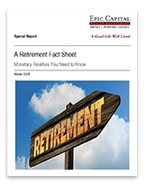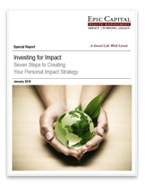Do Your Investments Match Your Risk Tolerance?
Jul 31, 2019

From time to time, it is a good idea to review how your portfolio assets are allocated – how they are divided among asset classes.
At the inception of your investment strategy, your target asset allocations reflect your tolerance for risk. Over time, though, your portfolio may need adjustments to maintain those target allocations.
Since the financial markets are dynamic, the different investments in your portfolio will gain or lose value as different asset classes have good or bad years. When stocks outperform more conservative asset classes, the portion of your portfolio invested in equities grows more than the other portions.
To put it another way, the passage of time and the performance of the markets may subtly and slowly imbalance your portfolio.
If too large a percentage of your portfolio is held in stocks or equity investments, you may shoulder more investment risk than you want. To address that risk, your portfolio holdings can be realigned to respect the original (target) asset allocations.
A balanced portfolio is important.
It would not be if one investment class always outperformed another – but in the ever-changing financial markets, there is no “always.” In certain market climates, investments with little or no correlation(a statistical measure of how two securities move in relation to each other)to the stock market become appealing.Some investors choose to maintain a significant cash position at all times, no matter how stocks fare.
Downside risk – the possibility of investments losing value – can particularly sting investors who are overly invested in momentum/expensive stocks. Historically, the average price/earnings ratio of the S&P 500 has been around 14. A stock with a dramatically higher P/E ratio may be particularly susceptible to downside risk.
Underdiversification risk can also prove to be an Achilles heel. As a hypothetical example of this, say a retiree or pre-retiree invests too heavily in seven or eight stocks. If shares of even one of these firms plummet, that investor’s portfolio may be greatly impacted.
Are you retired or retiring soon?
If so, this is all the more reason to review and possibly adjust the investment mix in your portfolio. Consistent income and the growth of your invested assets will likely be among your priorities, and therein lies the appeal of a balanced investment approach, with the twin goals of managing risk and encouraging an adequate return.
Tags: Investment Planning, retirement
More Insights
Did you buy U.S. Savings Bonds decades ago? Or did your parents or grandparents purchase them for you? If they’re collecting dust in a drawer, you may want to take a look at them to see if any of your bonds have matured. If your bonds have matured, that means they are no longer earning … Continue reading “How US Savings Bonds Work”
In baseball, three strikes and you’re out. With inflation, a third straight month of hotter-than-expected consumer inflation data nearly ruled out probabilities for a June rate cut yesterday (now less than a 25% chance, according to fed funds futures). The core Consumer Price Index (CPI) rose 0.4% in March, or 3.8% when compared on a … Continue reading “Market Update – Assessing the Prospect for a Pullback”
You know how important it is to plan for your retirement, but where do you begin? One of your first steps should be to estimate how much income you’ll need to fund your retirement. That’s not as easy as it sounds, because retirement planning is not an exact science. Your specific needs depend on your … Continue reading “Estimating Your Retirement Income Needs”
Let’s talk seasonality. For those that are unfamiliar, seasonality is the tendency for markets to perform better during some calendar periods and worse during others in a somewhat predictable way. One of the more amazing things about 2023 and part of the first quarter of 2024 is how well U.S. equity markets have been following … Continue reading “Can Pre-Election Market Trends Survive This Attention?”
The first quarter is in the books, and it was an excellent one for stocks. The S&P 500 index rode a resilient U.S. economy, easing inflation, rising corporate profits, and anticipation of summertime rate cuts from the Federal Reserve (Fed) to solid gains in March, the fifth straight winning month, and the best first quarter … Continue reading “Market Update – An Excellent First Quarter for Stocks”
Services
Epic Capital provides the following comprehensive financial planning and investment management services: Learn More >


 Top of Page
Top of Page











